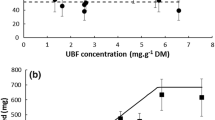Abstract
To test whether the range of montane Compositae species may be restricted to higher sites because of greater herbivory levels in the lowlands, we transplanted six species, combining them in three species pairs each consisting of a rare montane and a widespread species. Individuals of all species were planted at four sites of different altitude ranging from the lowlands to the subalpine Mt. Brocken in the Harz mountains, Germany. Food choice experiments with three mollusc species indicated that the montane plant was more palatable in the species pair Senecio hercynicus/S. ovatus, but the widespread plant was more palatable in the species pair Petasites albus/Tussilago farfara. In the third pair (Cicerbita alpina/Mycelis muralis), neither species was preferred. In the field, species-specific herbivory levels differed in their amount, in their interaction with plant phenology and in their effect on mortality. They only partially reflected the laboratory food choice results. We found clear differences between the lowest and the highest site for all species, but a continuous decrease in herbivory with altitude was only detected in three of the six species.
Similar content being viewed by others
Author information
Authors and Affiliations
Additional information
Electronic Publication
Rights and permissions
About this article
Cite this article
Scheidel, U., Bruelheide, H. Altitudinal differences in herbivory on montane Compositae species. Oecologia 129, 75–86 (2001). https://doi.org/10.1007/s004420100695
Received:
Accepted:
Published:
Issue Date:
DOI: https://doi.org/10.1007/s004420100695




